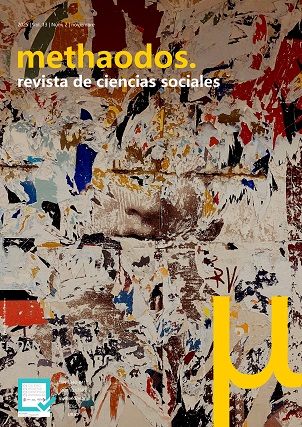Visual motifs and intertextuality of popular music in transmedia ecosystem: the visual album C. Tangana's El Madrileño
Main Article Content
Abstract
The contemporary context of cultural production is characterized by a maximum aesthetic hybridization and is a consequence of a greater audiovisual interrelation that prioritizes intertextual, intermediate and immersive experiences for the viewer. The transmedia logic expands from audiovisual proposals to all kinds of formats, leading to an increase in the number of channels through which to reach the viewer. The music industry is aware of all the innovations applicable to its production, and music artists need to adapt their discourse to global strategies, in order to gain visibility and to continue building their celebrity, their identity. The visual album, transmedia expansion of music video, is a new music promotion format that allows the generation of visual content to feed many advertising media of the artist. It is characterized by unity in its visual leitmotifs and an intertextual or quotation capacity that is appropriate for musical projects such as C. Tangana's El Madrileño, produced by Little Spain. The project is consistent with an aesthetic of musical collaboration and hybridization between traditional and modern Spanish imaginary.
Downloads
Article Details

This work is licensed under a Creative Commons Attribution-NonCommercial 4.0 International License.
References
Arne Hansen, K. (2019). (Re)Reading Pop Personae: A Transmedial Approach to Studying the Multiple Construction of Artist Identities. Twentieth- Century Music, 16(3), pp. 501- 529. https://doi.org/10.1017/S1478572219000276
Auslander, P. (2019). Framing Personae in Music Videos Philip Auslander. En L. A. Burns, & S. Hawkins (Eds.). The Bloomsbury handbook of popular music video analysis, (pp. 91-110). Bloomsbury Academic.
Balló, J. (2000). Imágenes del silencio. Los motivos visuales en el cine. Anagrama.
Bourriaud, N. (2004). Post producción. La cultura como escenario: modos en que el arte reprograma el mundo contemporáneo. Adriana Hidalgo Editores.
Canoa, N. (12 de marzo de 2021). C. Tangana: "Cada cierto tiempo me despierto pensando que debería ir al estudio y hacer unas barras". Rtve Play. Recuperado de https://shorturl.at/htyEM
Davisson, A. L. (2013). Lady Gaga and the Remaking of Celebrity Culture. McFarland & Company.
Encabo, I. (25 de febrero de 2021). C. Tangana: “He tenido miedo de que me metan en la cárcel”. El Independiente, 3. Recuperado el 3 de febrero de 2022, de: https://goo.su/fhxpY
Gardner, A. (2015). PJ Harvey and Music Video Performance. Routledge.
Gare, M. (2017). Defining the Visual Album by way of Animal Collective's ODDSAC: Identifying the Musicological Exchange between Music and Images based in Audio Visual and Music Video Analysis. [Tesis de Maestría-University of Utrech].
Goodwin, A. (1992). Dancing in the distraction factory: Music television and popular culture. Routledge.
Harrison, C. (2014). The visual album as a hybrid art-form: A case study of traditional, personal, and allusive narratives in Beyoncé. [Tesis de Maestría. Lunds University].
Herman. D. (2009). Basic Elements of Narrative. Wiley-Blackwell.
Ibars, A. (21 de diciembre de 2020). El hombre del año (Otra vez). Rockdelux. Recuperado el 30 de enero de 2022, de: https://goo.su/cRT9uzC
Jewitt, C. (2009). Different Approaches to Multimodality. En C. Jewitt, (Ed.), Handbook of Multimodal Analysi, (pp. 28-39). Routledge.
Lacasse, S. (2000). Intertextuality and Hypertextuality in Recorded Popular Music. En M. Talbot, (Ed.), The Musical Work: Reality or Invention? (pp. 35-58). Liverpool University Press.
Letts, M. T. (2010). Radiohead and the resistant concept album: How to di-sappear completely. Bloomington: Indiana University Press.
Maldonado, L. (25 de febrero de 2021). C. Tangana: "A mi generación le cuesta mucho apropiarse de la bandera de España". El Español. Recuperado el 30 de octubre de 2021, de: https://goo.su/5nGYHT
Sedeño Valdellós, A. (2019). El álbum visual como proyecto transmedia: Videoclip y experiencia transmedia en la música popular. Journal of Sound, Silence, Image and Technology, 2, 104-115.
Sedeño Valdellós, A., Rodríguez López, A. y Roger Acuña, S. (2016): El videoclip postelevisivo actual. Propuesta metodológica y análisis estético. Revista Latina de Comunicación Social, 71, 332- 348. http://doi.org/10.4185/RLCS-2016-1098
Shute, G. (2013). Concept Albums. Create Space Independent Publishing Platform.

